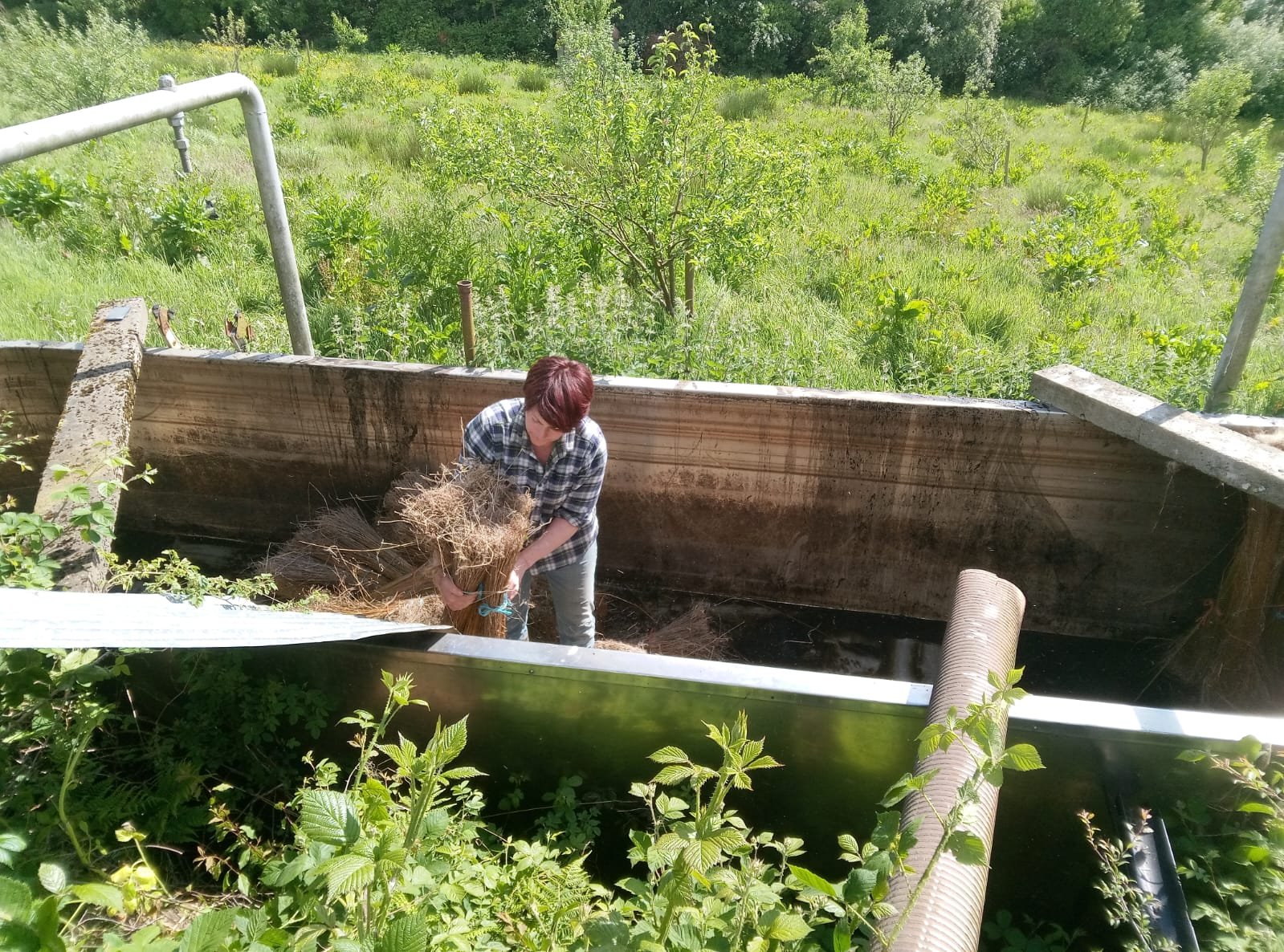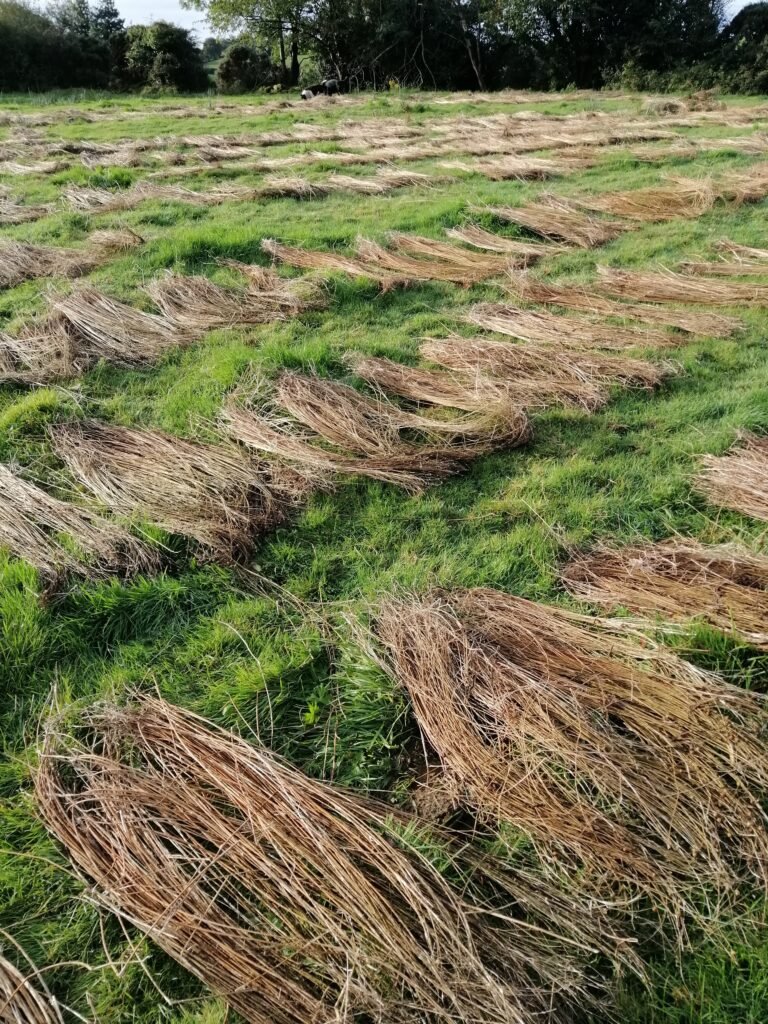

While this year’s crop of flax is around halfway through its growing period, we are still busy with retting last year’s crop. Retting is the process of breaking down the flax to separate the fibre from the outer layers. This can be done by spreading the flax over the fields to be retted by the dew or by submerging the flax in water. We have experimented with both techniques and found that tank retting is better suited to our climate here in Ireland. We use only rain and spring water and a recycled cheese vat as a retting tank. This ensures that none of the retting water goes directly into rivers, which was a problem in the past. Instead we spread it over the fields using a slurry tanker as it is a wonderful fertiliser. As we work to restore locally produced textiles in Ireland we need to think about how we build a textile industry that is regenerative rather than extractive.

We’ve had to monitor it carefully, removing the flax twice a day to check the progress. What we are looking for is fibre that comes away easily from the outer core. And when it’s ready it’s vital to act quickly. We’ve been told stories about flax being removed from retting dams in the middle of the night to ensure it is at the perfect stage. We’ve also been told plenty of stories about the smell of retted flax…it lingers in the memory even more than it lingers on the clothes and hands of the people working with it!
Once the flax is retted we spread it out on a freshly cut field, a process known as grassing. We’ll turn it a few times until it is dry and crispy before putting it back in bundles and bringing it in for storage until we are ready to scutch it. Read more about the process here

A spinner has been testing some of last year’s flax fibre for us. The tests have shown that there were still some pieces of the outer layers attached, meaning it was under retted. The good thing about under retting is that it can be addressed by putting the flax through this stage for a second time. We discovered from an old book that double retting was actually a recognised technique employed to give a high quality of fibre. It is a much longer, gentle process involving a lot of work as the flax needs to be retted, removed and dried for months before being retted all over again. It’s important that it doesn’t become over retted, which would weaken the fibres and ruin the crop. Our instinct has always been to pull it out too early rather than risk losing the crop but it is weaker when wet so from now on we will follow the advice of Eugene McConville – when you think it’s ready, leave it another day.
